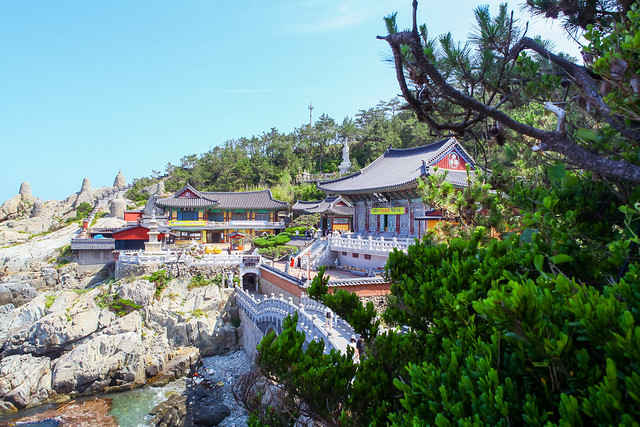UNDERSTANDING KOREAN CULTURE AND TRADITION

Understanding Korean culture as a foreigner might not always be easy. We wrote this full guide to help you get accustomed to Korean traditions and customs. If you are moving to Korea, you can also check out our full guide for moving to Korea here.
In just a few years South Korea has become an imposing world economic power. However, there are no large-scale exploitable natural resources: Koreans like to say that the country’s only exploitable resource is its human resource. Work, hierarchy and politeness are keywords in Korean society. Tradition coexists with advanced technologies.



In this guide we are going to draw up generalities in Korean culture. Of course, not everyone is the same and the culture is evolving. However, this guide will give you a pretty good idea of what Korean culture is like in general. This will certainly prepare you for the cultural shock if you are moving to Korea and to avoid a few missteps…
A brief history of Korea
Knowing more about the Korean history, will help you better understand Korean culture.
The Korean state was first founded in the 3rd millennium BC. Since then, this country somehow survived between China and Japan without losing its identity. The division of Korea between North and South dates back to the aftermath of the Japanese occupation that began in 1905. At the end of World War II in 1945, Korea was divided into two zones by the world powers, the United States and the Soviet Union.
In 1948, the South and the North each constituted an independent state, a communist North, and a South under the US influence. In June 1950, the Korean War began. The South was supported by the United States, the North by China. The Panmunjeom Accord, signed in 1953, ended the fighting but not the war, which today has still not officially ended.
The Korean Peninsula is divided by a demilitarized zone. It is the most militarized area in the world. After the war, the Republic of South Korea, an authoritarian regime under the autocratic government of Syngman Rhee and the dictatorship of Park Chung-hee, experienced rapid economic growth. It was in the 1980s that demonstrations ended the dictatorship to install democratic power. Kim Dae-jung is the first president to enjoy real democratic legitimacy.
The possibility of reunification remains an important subject in the political life: no peace treaty has been signed with the North. South Korea maintains efforts to improve the situation.
Hierarchy and Age in Korea
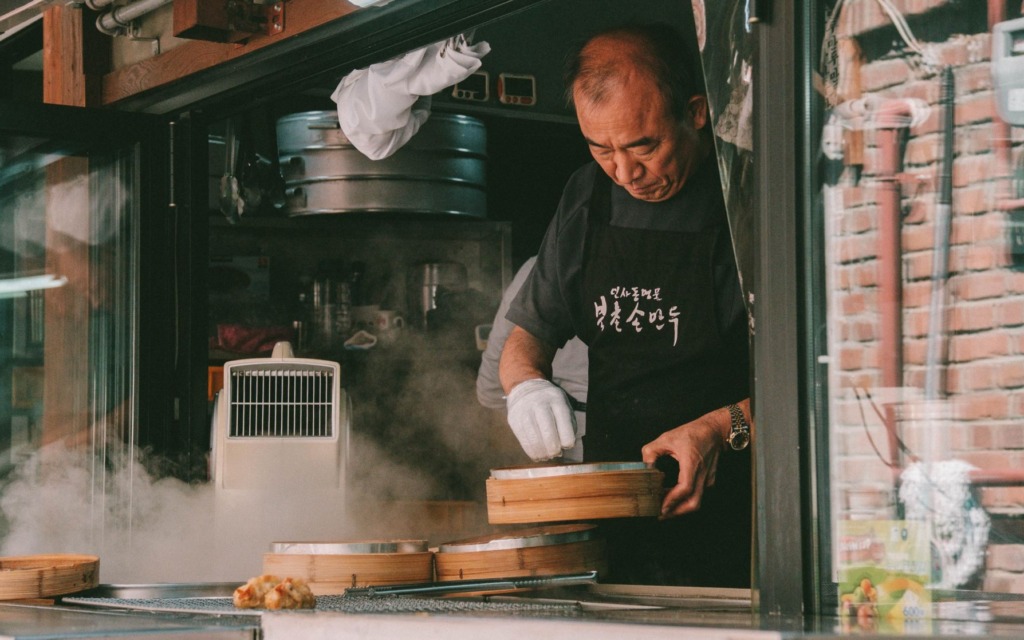
Hierarchy is very present in Korea, from early childhood, with the system of elders and juniors. In business, this will be even more accentuated. The respect for your supervisor will be really important! In Korea, colleagues call each other with their job rank. There are many different ranks in Korea.
When knowing each other’s rank, Koreans know which level of respect they need to follow. Of course with the new generation, the aspect of rank and hierarchy is not as important as what it used to be, but still very present. Especially when working for Korean companies.
Age is required in all circumstances so that your interlocutor can stand in front of you in the junior / senior relationship. Don’t hide your age, it’s not a taboo in South Korea. It is probably one of the first questions you will get when meeting new person in Korea. If you don’t disclose your age, you may even embarrass the other person, since they would not know how to address you.
In society, you will have certain codes to integrate in relation to the age of your interlocutors, such as not to drink, eat or sit down before the oldest person present has done so. Same at work, normally the boss should start first.
Korean age
Did you know Koreans don’t calculate their age the same way we do? Indeed, if you ask a Korean about his age, he will certainly answer you this: “Korean age or international age? “. In fact, Koreans start counting years from the embryonic “existence” of the baby and not according to its “lived” experience. From birth, a little Korean is therefore already 1 year old (the 9 months in utero are rounded off to one year)! Age is therefore calculated in relation to the year of birth and not by day and month.
Here’s how to calculate your Korean age in a simple formula:
The current year – the year you were born + 1 year = your age in Korean
In conclusion about hierarchy and age, observe Koreans well in their interactions with their superiors and elders, and you will observe very different attitudes compared to more Western cultures. As a foreigner, you are not expected to know all the codes, but keep in mind that you owe respect to seniors and your superiors, even if, for example they overtake you in a waiting line.
Politics and Chaebol
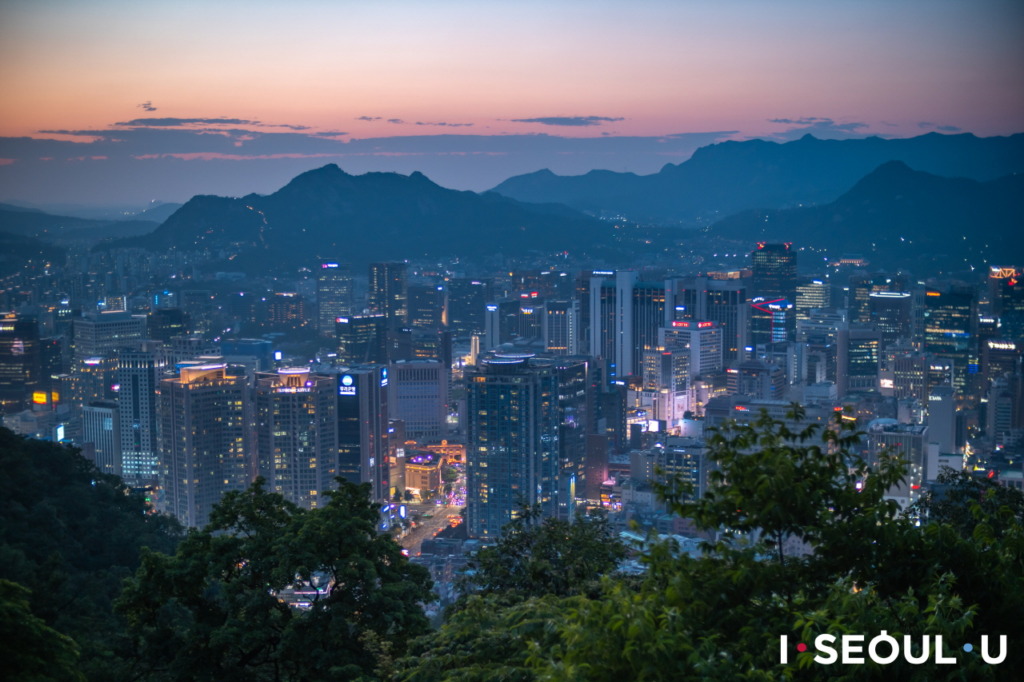
Politics
A word of advice: avoid getting into political discussions with Koreans… Our conception of politics can be very different from that of the Koreans. In short, the country is used to a rigid and fairly corrupt right-wing capitalist government. Corruption have long been established. Just look at where most of the previous presidents ended up… Jail!
Koreans often have a fatalistic attitude to this situation. Many will tell you that their government is corrupt and in the hands of the conglomerates, but there is nothing they can do about it. However, the proliferation of politico-financial scandals are beginning to make the population tired, which aspires to more transparency. They started to express themselves via the Internet but also via huge gatherings in the big cities to protest against the government.
Chaebol
The government has been heavily involved with the Chaebol (big Korean conglomerates such as Samsung, Lotte, SK, Hyundai etc.) which some may say, are the ones really running this country. Their CEOs are almost considered celebrities in Korea.
These conglomerates mostly from family businesses were mainly developed in the 1960s to rebuild the country after the war. They benefited from close links with the government which still today grants them many privileges. Characterized by their heavy investment in many sectors, they constantly expand their activities.
But if the Chaebols have long been presented as a national pride for having contributed to the South Korean economic miracle, the latest scandals of corruption or arrogant behavior on the part of the heirs tarnished their image. The population is increasingly exasperated and even worried. The annoyance is such that the new South Korean president, Moon Jae In, has promised the reform of the Chaebols as an important point of his presidential campaign.
Did you know that Samsung is not only a phone or electronic company? They build ships, and cars, offer insurance, operate theme parks, are engaged in trading businesses, run advertising agencies, own many properties, etc. They operate in countless sectors.
It important to understand the role of Chaebols in the Korean society to fully understand the Korean culture.
Religion in Korea

There are three major religious currents in South Korea: Buddhism, Christianity and Confucianism.
Buddhism
Until the 14th century, Buddhism was the official religion in Korea. Today, buddhism represents only under 25% of Koreans (including monks and nuns). The Buddhist heritage is very strong. There are many temples in which it is possible to do a “temple stay” (more info here) in order to discover Buddhist philosophy. If you want to visit some of the most beautiful Buddhist temple, make sure to check out Jingwansa in Seoul and Haedong Yonggungsa Temple in Busan
Christianity
Christianity began to develop through charitable missions spearheaded by British and American missionaries in 1885. The Bible was translated into Korean in 1887 by a Scottish missionary. Today, 31.6% of the Korean population is Christian, the vast majority of whom are Protestants (24%). South Korea thus became the second country of missionaries after the United States.
Myeongdong Cathedral is considered the symbol of the Catholic presence, while Yeouido Full Gospel Church, with its 700,000 worshipers, is the largest Protestant church.
Confucianism
Even though only 3% of the population declares themselves Confucian, Confucian values are deeply rooted in Korean culture. Morals, way of life, and law-making are still largely based on the values of Confucianism. This religion is inspired by the Chinese philosopher Confucius who advocates a precise segmentation of individuals in society and obedience to the “powerful”, which contributes to the unchallenged respect of the hierarchy and to the fact that man is placed at the center, the woman to be submitted to her husband in order to maintain family harmony.
Shamanism
Some Koreans still practice shamanic rites linked to the traditional beliefs of the past in which the spirits hold a very important place. These kinds of rites where song and dance mingle are still frequently practiced during traditional ceremonies, especially in the countryside.
Overall, religion and beliefs plays an important role in the Korean culture.
Man and Woman relationship

Korean society is very patriarchal: the ideal woman (as seen in advertisements, for example) is feminine, always neat, well-mannered and always maternal. And when a woman is employed, she is often expected to end her career when married. The man, on the other hand, has the responsibility of finding a good job to support his future family and find a wife. It is more difficult for a man with an unstable or low-paying job to get married.
Princesses to protect
Girls usually do not leave the parental home until they get married. It is quite rare for a woman to live alone. The woman is seen as a person to be protected.
It is generally frowned upon for a woman to smoke, the reason traditionally given is that the body of a woman being brought to bear children, must stay healthy. However, this trend is changing. You will see many young Korean women smoking in the streets. If you are in the presence of an elder or your supervisor, avoid smoking in front of them unless they allow you to do so.
Work freeks
The man is expected to support the couple’s needs, with the woman traditionally staying at home to care for the children and parents. It is therefore more important for men to get a good education because they are the ones who will work. In fact, the pressure at school is often greater for boys than for girls.
Men will often work tirelessly and do a lot of overtime. After work it is very common to still go out with colleagues for dinner involving lots of drinking. Exhausted by work, you will see many of them sleeping in the subway in the morning or evening.
Marriage
In Korea, the family has a strong decision-making power in the choice of the partner. If parents are unhappy with the lucky winner, Koreans will often end the relationship and choose a partner who better meets their family’s expectations.
If you are ever invited to a Korean wedding, be sure to be on time. A wedding ceremony only lasts for about 1 hour (including ceremony and lunch/dinner). Everything is super fast. As we are used to European weddings which usually last many hours sometimes until dawn, we were 30 minutes late to the venue for our first Korean wedding… Well, we missed half the wedding and people were already eating desserts! We were so surprised. So be prepared.
The myth of the foreign knight
Although they are often gentlemen when flirting, Korean men have a not-so-good reputation once married: they are rarely at home due to work and have a little tendency to adultery… With this gloomy picture, you will therefore understand why foreigners are so popular with Korean women who see them as romantic and loyal knights.
But despite everything, few mixed couples last for the long term, with pressure from family and society not working in their favor. Koreans will instead choose a Korean to build their future.
The queens of Korea: the Ajumma gang
When women get married, they traditionally quit their jobs and live in their in-laws’ houses, especially if they marry their first son (who is heir to family traditions). She will at the same time take over the responsibility of household chores and will have to take care of her in-laws for when they get old. The young Korean then enters into a love-hate relationship with her stepmother. This is how we come to Ajumma.
The life of Korean women may seem sad at first glance! When a Korean woman is in her 50s, the children leave home, and in the best-case scenario, she has found a stepdaughter who will take over the daily chores of the house. The woman then becomes Ajumma. The most influential woman in the country! No one dares to attack ajumma (= women of a certain age), especially when they are with other ajummas
Ajummas are the ones who control the finances at home, they have strong purchasing power and if their in-laws are deceased, they are at the head of the family hierarchy.
They will happily walk past you in the queues, they will stare at you in the subway so that you give them your seat, they will push you into the sauna or forbid you to use the shower area they have made their own. In short, no joke with Ajumma!
Alcohol and cigarettes
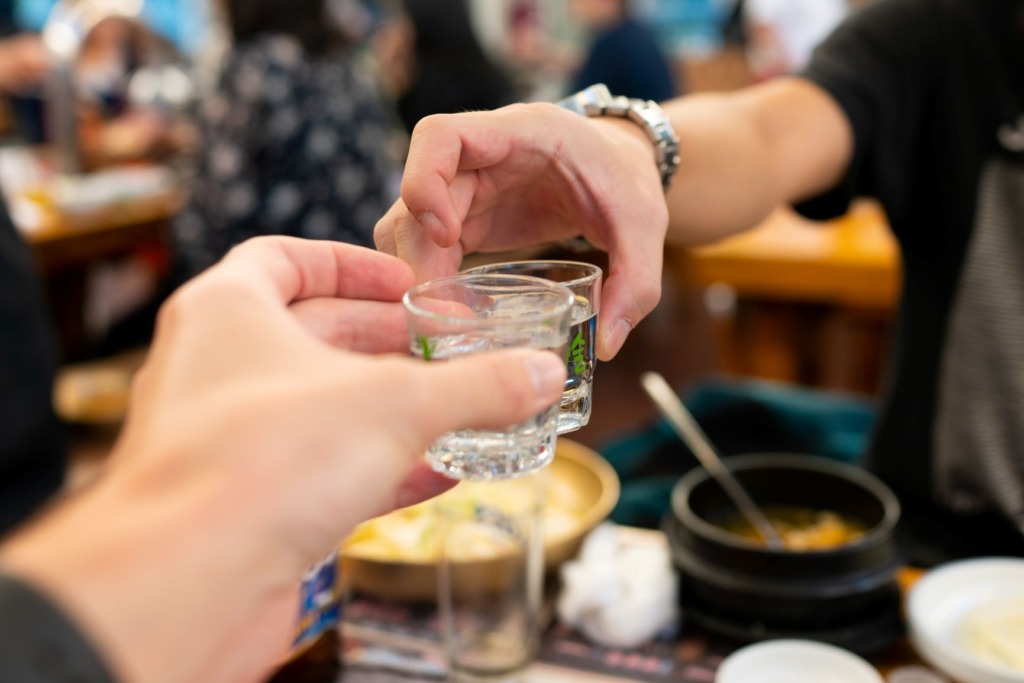
You might be surprised about this chapter, but alcohol and cigarettes are important aspects of understanding Korean culture.
Koreans are heavy drinkers and heavy smokers. If you are sensitive to cigarettes, expect to be regularly annoyed by the smell of it.
Since 2013, it has been illegal to smoke in public places (bar, café, metro, schools, etc.). You also cannot smoke anywhere on the street since there are outdoor “smoking areas” designed for this. If you still want to smoke outside the dedicated places, then you will have to go into hiding (students, especially girls, are often caught smoking in small, discreet alleys).
It is frowned upon to refuse to participate in drinking games, especially in the evenings after work. However, you can participate lightly and decline some offers that are made to you, but an outright refusal will be taken as rudeness. In Korea, the great thing about drinking is that it allows you to express your true personality and your opinions. Alcohol is a real social backbone.
Cigarettes are seen more as a tool to relax. Koreans work a lot, they are very prone to stress, which is a big public health problem in Korea. South Korea is one of the countries with the highest suicide rate in the world. Numerous studies show a real discomfort among Koreans, often linked to a tiring pace of work which prevents them from a healthy social and family life.
Soju
Soju is the traditional Korean alcohol. A true symbol for this society in which alcohol holds a major place in social relations.
Soju is a rice alcohol that varies between 20 ° (classic) and 45 ° for the strongest. It’s a drink that can be enjoyed together around a good meal, like a Korean barbecue, for example.
A glass should never be empty! But it is customary to never fill it out yourself.
To serve a drink, you have to hold the bottle in your right hand while touching your forearm with your left hand, which is a sign of respect. If an older or hierarchically superior person is serving you, hold out your glass with both hands and turn around to drink.
Soju is completely integrated into the Korean Culture. A must-try if you visit South Korea.
Don’t lose face

Appearances and group spirit are important in Korea. Everyone needs to get along and there is no disagreement in public. Losing face on someone is very rude and one of the biggest social mistakes you can make.
Even if you disagree with someone’s speech, never openly contradict them by proving to them with A + B that they are wrong. No polemics or heated debates as we like them in other countries. If you really have something to say, wait until you are drunk to express yourself! 🙂
There is a very high suicide rate in the country, however, you might be surprised at the dismissive attitude Koreans can sometimes have towards those who take action. People who try to kill themselves have lost face and their families lost face.
A country still not used to foreigners
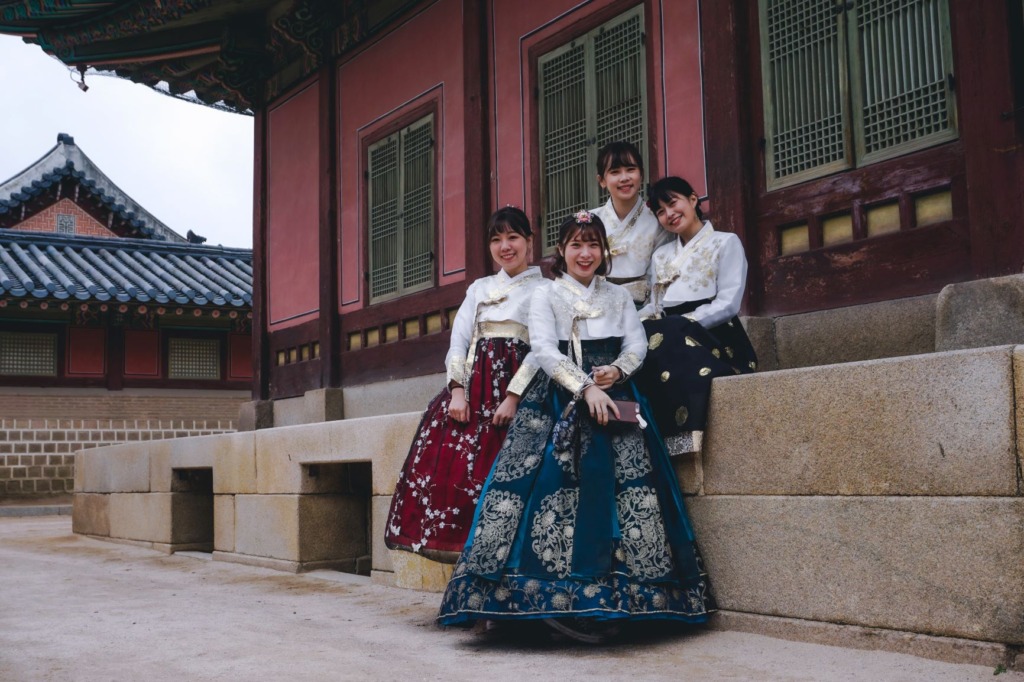
You will sometimes hear Koreans being called harsh people and racist towards foreigners.
There is, admittedly, some discrimination against foreigners in South Korea. The country has so far not been confronted much with foreigners. Korea has been open longer than Japan, but it is very patriotic. Because Korean was invaded by many other countries during its history, the people remained suspicious about foreigners.
However, South Korea has been recruiting for several years a lot of English teachers from the United States and Canada, which is gradually introducing foreigners to the big cities, especially Seoul. You are unlikely to be denied access to certain areas, but be aware that it can still happen.
If you are not of the Asian type, expect to be stared at on public transport or on the street, especially by the elderly: it is not necessarily malicious, it is simply curiosity.
Appearance

This is a very important part to understand the Korean culture. Beauty is important and cosmetic surgery is a profitable business. Also perception from others is critical. Korean won’t hesitate to make big sacrifices to buy the latest car or electronic device just to be seen with it, even if they can’t afford it.
In terms of beauty, Koreans are sometimes attached to things that do not necessarily seem important to us: the shape of the nose, the size of the eyes, the chin, etc.
Plastic Surgery
Did you know that South Korea is the country where plastic surgery is performed the most per capita?
The first plastic surgery clinic opened in the 1960s. From the 2000s it became a real boom. Korea’s economic development and Western influence are one reason, but not only. Competitiveness and social pressure are also factors to be taken into account.
Indeed, appearance plays a very important role in Korean society and everything is done to encourage standardization under penalty of being poorly integrated or even rejected by one’s peers. When entering college or looking for their first job, it’s not uncommon for parents to “offer” plastic surgery to their children.
The most common surgery is for the eyes, followed by that of the nose. The big trend of recent years is called the “V line” and consists of having a heart-shaped face by refining and making the chin point. 70% of clinics are located in the upscale Gangnam district.
Makeup and cosmetics
Koreans pay a lot of attention to their appearance and makeup is a must. Even men use foundation and makeup.
South Korea has always been one step ahead in terms of cosmetic innovations: BB cream, lip tint, fabric mask, powder lipstick … not to mention the packaging that is always extremely well crafted with effective communication. Let’s face it, Koreans are brilliant inventors and excellent marketers! The craze for cosmetics and the beauty industry is so rampant in Korea that it’s not uncommon to walk past a dozen “beauty shops” just in a single street!
The most famous brands are Etude House, Tony Molly, Holika Holika, Nature Republic, to name a few. So be ready to triple the volume of your makeup bag.
Tattoos and piercing
Piercings and tattoos are not common and sometimes not accepted in South Korea. You can even be denied access to a sauna if you have tattoos and you will not go unnoticed in the street with a nose ring. Expect some discrimination if you have a piercing or tattoo when entering certain places.
However, with the arrival of more and more foreigners, the anti-piercing or anti-tattoo trend is decreasing year by year. You should also know that the practice of tattooing is illegal in Korea. It may sound surprising, but it is a reality. In theory, only people with a medical degree can practice this discipline, in practice, you can imagine that this is not the case. Let’s say it’s theoretically illegal, but “tolerated”.
Korean Food

Food is fully embedded in Korean culture.
The notion of Korean food has developed from the social values of friendliness, generosity and sharing as well as the traditional values of balance and harmony between man and nature. The Korean people are particularly attentive and attached to food. Family and social life are associated with food. In professional life, welcoming a new colleague often begins with a collective welcome meal.
Korean gastronomy entered international relations In the 1980s, not only as a cultural object but also as a social, economic and diplomatic issue. In a politically and socially divided country, especially after the Korean War, it was necessary to find an element of social cohesion. Food and collective meals played this role.
Today, Korean food is known to combine aesthetics and nutrition. A Korean proverb even says “what is beautiful in appearance is also delicious”, which is a good summary of Korean food. They elegantly combine fish, vegetables, meats, sauces… everything is carefully organized in a Korean dish. Korean even pay attention to the color: the garnishes that accompany the dishes respect a principle of harmony between the five cardinal Korean colors corresponding to the cosmic elements (white, black, green, red and yellow).
It’s all about the balance between the flavors, the products (meats, vegetables, fish, seafood, etc.), the garnishes blend together to produce a finished dish, perfect, healthy for the body, good for the spirit.
Kimchi
Traditional Korean gastronomy was influenced by Chinese culinary art, especially by its method of fermentation which was also the basis of Korean food. It was under this Chinese influence that the original characteristics of Korean gastronomy developed during the period of the ancient Korean kingdoms (Goguryeo, Baekje and Silla). Here was the first appearance of kimchi, an iconic Korean dish.
Symbol of Korean gastronomy and Korean culture, Kimchi is a national dish. It is prepared with fermented vegetables, traditionally cabbage. According “Health Magazine” Kimchi is one of the 5 healthiest dishes in the world. There are over 300 different recipes. Although you may not like it at first, Kimchi quickly became addictive for us!
5 elements
In Korean culinary tradition, a dish should have five colors in equal proportions – green, red, yellow, black and white – representing the five natural elements, but also the five flavors, spice, sugar, acid, dirty and bitter. This marriage of colors and flavors symbolizes the five cosmic energies essential for inner harmony.
Korean BBQ
If you go to Korea and love meat, you won’t resist the “korean barbecue”! Koreans love it! You will find a many BBQ restaurants scattered all over the place.
In the middle of the table, there is a grill on which you just have to place the marinated raw pieces of meat to grill them. Sometimes a restaurant employee takes care of it, especially if they are foreign customers.
This meal is always accompanied by banchan (small side dishes) and very often with soju! The most popular (and cheapest) meat is undoubtedly samgyeopsal (삼겹살), slices of pork belly.
Some popular dishes
- Bibimbap – This popular Korean dish, the most famous in the world, is a delicious blend of rice, vegetables “mamuls” in Korean, beef seasoned with sesame oil and chili paste. Served in a hot pot, it sizzles when brought to the table, emphasizing hearing and smell.
- Bulgogi – Korean barbecue, one of the country’s star recipes, is a dish of minced beef marinated with different seasonings before being grilled on a preheated barbecue plate. It is eaten by placing half a tablespoon of rice, a little Bulgogi and chili in a lettuce leaf.
- Haemul Pajeon – Korean pancake – This tasty pancake, is made from different flours, barley, rye or buckwheat and glutinous rice flour is fried with scallion, seafood and chili. Then add a beaten egg. This is the quintessential dish in popular stalls, where they drink the traditional Makgeolli, a type of sweet Korean rice alcohol.
For more information on the best Korean dishes you won’t want to miss, check out this post.
Hallyu phenomenon (K-Pop, K-Drama etc.)
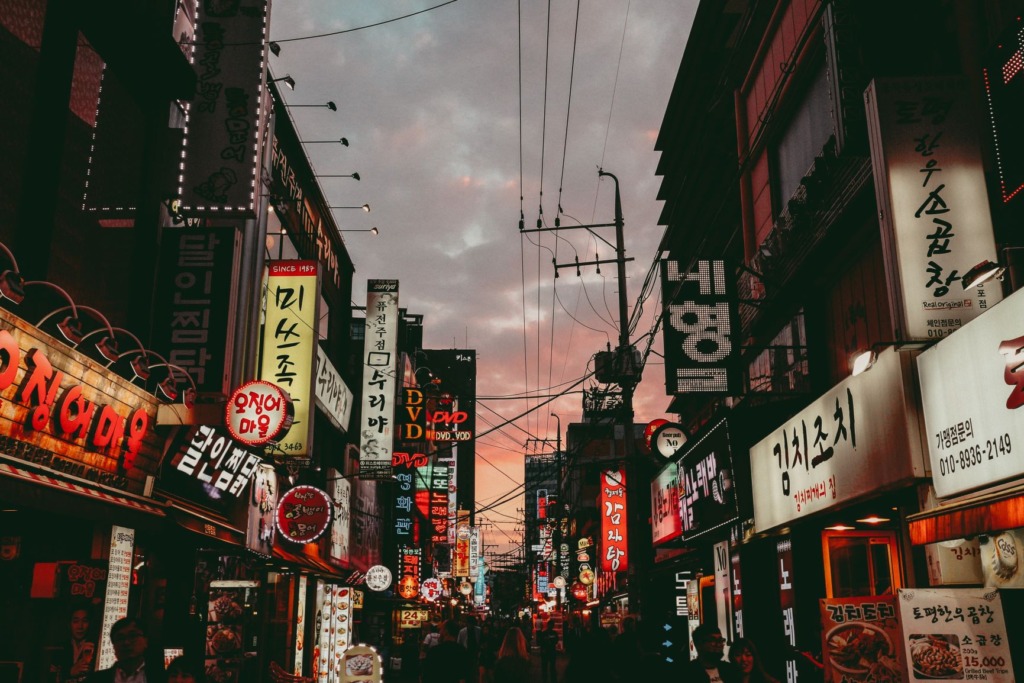
From the global success of K-Pop music to the international recognition of its cinema (with the recent example of the movie Parasite, elected best movie from the Cannes Festival in 2019), including the craze for its television series, Korea has for several years become a true cultural powerhouse. When most people think about Korean culture, they mostly refer to K-Pop, K-Drama, K-movie etc, generally referred to as Hallyu. Literally meaning the Korean Wave
This movement is supported by the government in the promotion of the Korean cultural industry and by the chaebols directly involved in this sector.
Hallyu first appeared in the 90s
When the Hallyu phenomenon appeared in the 1990s, it was only considered to be temporary. South Korea is not a traditionally exporting country of its own culture.
However, the phenomenon really developed following the Asian financial crisis of 1997, from which Korea suffered greatly. In times of economic instability, people generally turn to popular culture. Also the younger generations started to turn to artistic professions rather than industrial sectors where the unemployment rate was high.
This new contribution of artistic talents has encouraged the development of Hallyu.
Paradoxically, the term Hallyu was first used in 1999, but with a negative connotation. A Chinese journalist wanted to alert public opinion about the popularity of Korean mass culture among Chinese youth. This mass culture has continued to develop since then.
A strong influence in other Asian countries
Korean soft power is particularly present in Asia. The Chinese case is obvious, but we find this phenomenon even more important in Southeast Asia. This is explained by the competitiveness of Korean products against Japan, and their positive image (against China in particular). Companies like the Philippines and Indonesia, gigantic markets of 100 and 250 million people respectively, are prime targets.
In addition to exporting K-Pop and TV series, there is a growing number of Korean brands appearing in series and music videos. Cosmetics, fashion, cars, telephones, gadgets of all kinds… Southeast Asians often develop an image of Korea that reflects these productions, and a desire to “live Korean” arises.
Hallyu today
The Hallyu phenomenon draws attention to South Korea and emphasizes areas other than mass culture, such as hangeul (Korean alphabet), hansik (Korean food), hanbok (costume traditional Korean), hanok (traditional Korean houses), hanji (traditional Korean paper), or even traditional Korean music.
We can also look at the impact on the tourism sector in South Korea. Since the beginning of the Hallyu phenomenon and the sports media showcase inaugurated with the Seoul Olympic Games in 1988, the number of foreign visitors to Korea has continued to increase. Proof that other nations are beginning to take an interest in Korean culture.
Tourism in South Korea is a booming industry. Many parts of the country have become must-see tourist destinations. This is also a reason why we decided to write this blog, since very little was written about Korean when we arrived in 2018 (you can find all our articles about Korea here).
Today, if you go to Insadong district or Dongdaemun market in Seoul (must-see in Seoul), there are more and more signs appearing in English or Japanese. The Hallyu phenomenon bring economic benefits to the cultural industry such as cinema, music or television series, but also sport. .
South Korea is no longer a country stuck between the two great powers of Japan and China. The image of this country has changed dramatically. The Korean Culture is more than ever making it’s way to the international scene.
K-Pop
If you like South Korea, you are certainly familiar with “K-pop”, a term for South Korean pop music.
When we think of “K-pop”, we immediately visualize these groups of young girls or boys called “idols”, swaying to catchy tunes in an ultra-colorful setting. However, it is not only the case today. K-Pop is much more diverse and also includes solo artists. Dance, Pop, electronic, rock, hip-hop, and R&B can also be considered K-Pop. The singer you all know is PSY (Gangnam Style).
The K-pop industry is extremely developed in Korea and you you will hear it everywhere if you are traveling to Korea! Expect to hear Bigbang, BTS or Girls Generation on EVERY street corner!
In addition, many kpop stars lend their pretty face for advertisements of all kinds (cosmetics, alcoholic drinks, clothing brands…). The biggest concentration of K-pop merchandise shops and record stores is in the Myeongdong shopping district in Seoul.
K-Drama
Dramas are a real institution in Korea. Everyone watches it, from the college girl to the grandmother and the Ajummas.
Like the American series, there are different genres (romantic, historical, medical, police, school…). Several concepts seem to be popular and are therefore redundant, such as: the love trio, the poor girl who falls in love with a rich boy or the young girl…
Some Korean dramas are actually adaptations of Japanese manga or series, such as the very popular “Boys Over Flower” adapted from the manga “Hana yori dango”.
Drama episodes are usually shot from week to week, so actors often discover their script the same day. Note that many K-pop singers are also actors in dramas, which significantly increases the popularity of the series. The three Korean channels with the monopoly on dramas are MBC, SBS, and KBS. If you want to start with K-Drama, we recommend Mr. Sunshine on Netflix, a mix of historical, adventure, and romantic series.
Other aspects of the Korean Culture
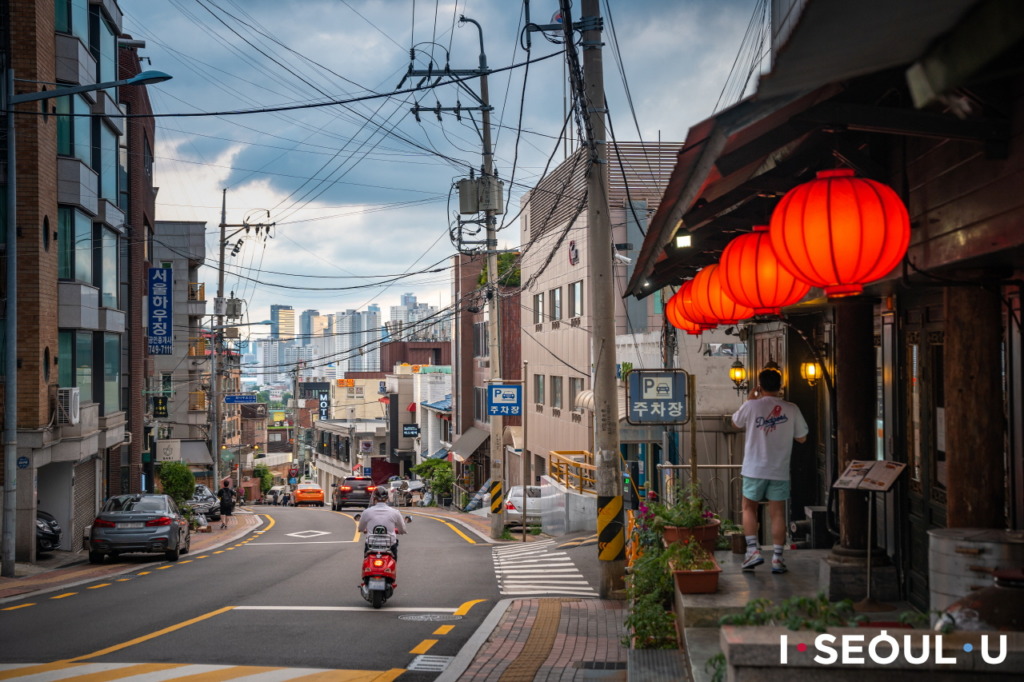
Lunar New Year
The Lunar New Year, also known as “Seollal” is the most important holiday of the year for Koreans.
The date varies every year, but is always between January 21 and February 20. It is a celebration linked to ancestor worship during which it is customary to wear the “hanbok” (Korean traditional garment) and go to the tomb of the elders. It is also and above all an opportunity to get together with family, even if the task is not easy for the women who are in the kitchen for 3 days to prepare for the ceremony.
Some traditional dishes are prepared especially for the Seollal, such as Tteokguk (떡국), rice cake soup (traditionally, eating tteok soup symbolizes taking an extra year). The manduguk (만두국), a soup of large dumplings filled with vegetables or meat.
During this period, thousands of Koreans return to their hometown, which is sometimes located in the countryside. The roads are therefore extremely congested and the reservations of trains and internal flights are literally exploding. A peaceful atmosphere reigns in the big cities which empty almost completely during the Seollal. Even in Seoul!
Celebrating Lunar New Year is very important for the Korean culture.
Noraebang
Singing is without a doubt one of Koreans’ favorite things to do! And a lot of Koreans even have a real talent for it. At any time of the day or night, you can hear echoes emanating from karaoke scattered all over the city (it’s less fun if your accommodation is right next door).
“Noraebang” literally means “room for singing”. It is an enclosed and private place where Koreans usually meet with friends or colleagues.
Usually, there are two microphones and tambourines or maracas so that other people who are not singing can also participate. For Koreans, it is above all an opportunity to let off steam and release the pressure after a long day at work.
Pali Pali
“Pali pali” literally means “quickly quickly” or “hurry up”. It is a bit of a Korean flagship phrase and one that perfectly sums up the fast development of Korea and the frenetic pace in which Koreans live.
Koreans are always in a rush and it shows in everything.
In big cities, everything is done to make your life easier, such as cafes or small convenience stores open 24 hours, including Sunday! In Korea, everything moves VERY fast.
Pali Pali is the first expression we learned from our taxi driver when arriving in Korea. We quickly understand why this is so important in Korean Culture.
jimjilbang
“Jimjilbang” is the term used for Korean saunas, a must-try when wanting to experience Korean culture.
These establishments are open 24 hours and offer hot baths, sauna, steam rooms, etc. of different temperatures to relax. Here, the baths are not mixed and we often bathe naked, so don’t be shy! With your towel, you can stretch out on the floor to take advantage of the underfloor heating (ondol). These places are sometimes huge and offer many activities available 24 hours a day to pass the time (restaurants, karaoke, arcades, etc.).
On weekends, you can see a lot of Korean families with their children, while during the week, we see a majority of workers men wanting to relax.
Internet speed
Koreans are hyper-connected and need to be reachable at any time of the day or night, especially by their boss. Thus, everything has been done to avoid the stress (and especially the waste of time) of the lagging connection.
Imagine that Koreans aged 20-30 spend more than 5 hours a day on their smartphone!
South Korea is one of the first countries in the world to launch 5G. It is the country with the strongest Internet connection. In Seoul, you can enjoy free wifi in almost all public places, as well as in public transport (subway, bus, train).
In conclusion
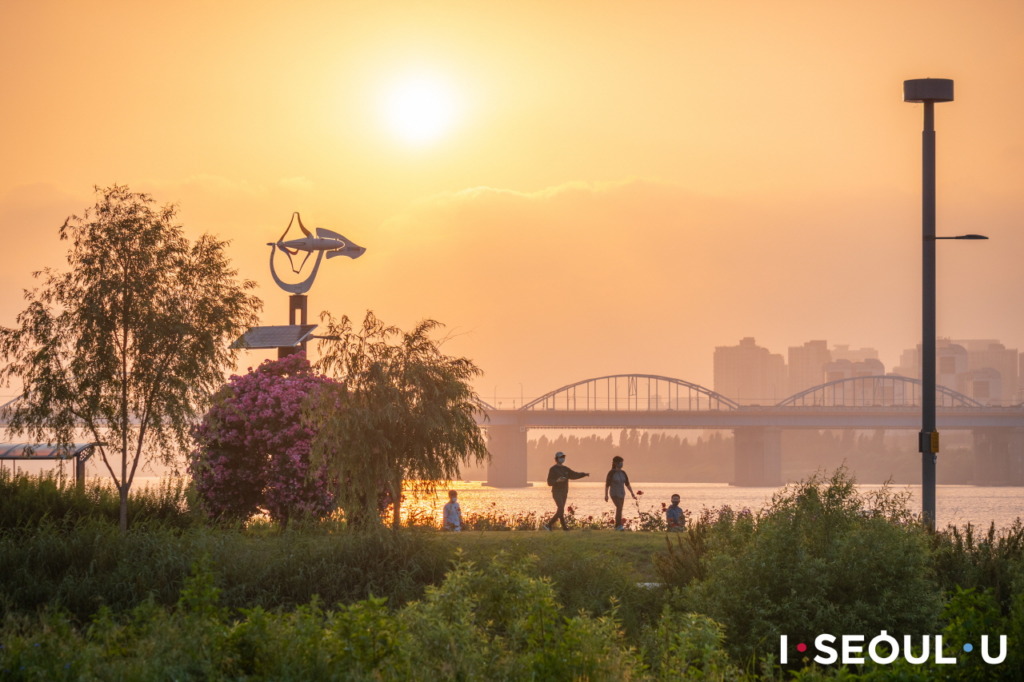
We hope that this article made you want to visit Korea even more. We lived in Korea for 3 years, and we were fascinated by the Korean Culture.
Here is full post about what it is like to live in Korea as a foreigner
We also had the chance to explore the country and visit wonderful places. You can find over 100 articles about Korea in our website by clicking here.
Finally, if you need more information or have any additional questions about Korean culture feel free to leave a comment below! We will be happy to answer.
PHOTOS BY SEOUL METROPOLITAN GOVERNMENT/PENTA PRESS

